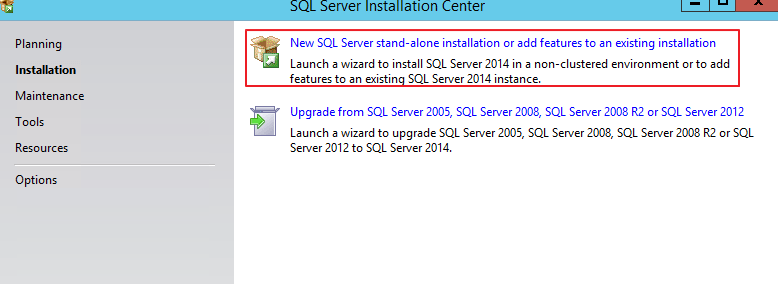

Note that this edition has been retired in SQL Server 2012. Workgroup SQL Server Workgroup Edition includes the core database functionality but does not include the additional services. It includes the Standard Edition capabilities and Business Intelligence tools: Power Pivot, Power View, the BI Semantic Model, Master Data Services, Data Quality Services and xVelocity in-memory analytics. Business intelligence Introduced in SQL Server 2012 and focusing on Self Service and Corporate Business Intelligence. Web SQL Server Web Edition is a low- TCO option for Web hosting. It differs from Enterprise edition in that it supports fewer active instances (number of nodes in a cluster) and does not include some high-availability functions such as hot-add memory (allowing memory to be added while the server is still running), and parallel indexes. Standard SQL Server Standard edition includes the core database engine, along with the stand-alone services. It can manage databases as large as 524 petabytes and address 12 terabytes of memory and supports 640 logical processors (CPU cores). These editions are: Mainstream editions Enterprise SQL Server Enterprise Edition includes both the core database engine and add-on services, with a range of tools for creating and managing a SQL Server cluster. Microsoft makes SQL Server available in multiple editions, with different feature sets and targeting different users. The current version is Microsoft SQL Server 2019, released November 4, 2019. Īs of May 2020, the following versions are supported by Microsoft:įrom SQL Server 2016 onward, the product is supported on 圆4 processors only.

SQL SERVER 2014 NATIVE CLIENT DOWNLOAD CODE
SQL SERVER 2014 NATIVE CLIENT DOWNLOAD WINDOWS
SQL Server 4.2 for NT is released in 1993, marking the entry onto Windows NT.MS SQL Server for OS/2 began as a project to port Sybase SQL Server onto OS/2 in 1989, by Sybase, Ashton-Tate, and Microsoft.The history of Microsoft SQL Server begins with the first Microsoft SQL Server product-SQL Server 1.0, a 16-bit server for the OS/2 operating system in 1989-and extends to the current day. Main article: History of Microsoft SQL Server


 0 kommentar(er)
0 kommentar(er)
